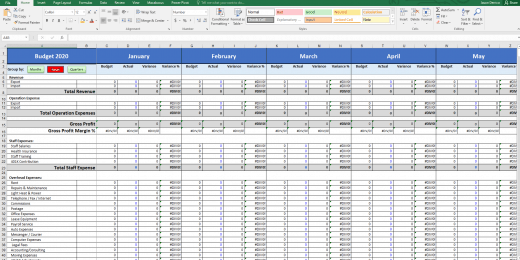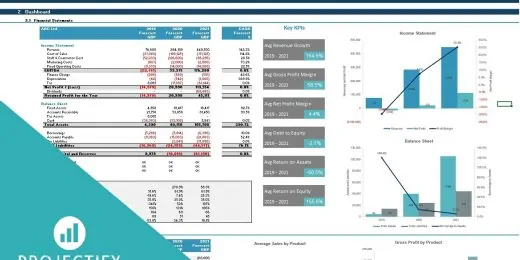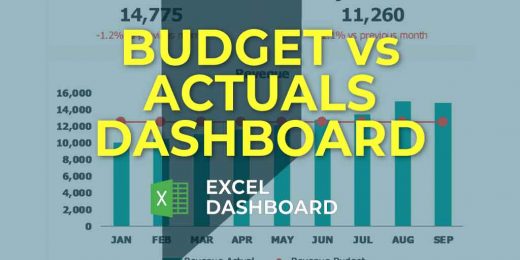Explore Best Practices With Cost to Open a Liquor Store

The cost to open a liquor store varies based on location, size, and inventory. Essential expenses include lease, licensing, inventory, and insurance.
Opening a liquor store can be a lucrative business venture, yet it requires a significant financial commitment. Before diving into this entrepreneurial journey, it’s crucial to understand the myriad of costs involved. Entrepreneurs should account for the initial investment needed for securing a prime location, obtaining the necessary licenses and permits, investing in a diverse and appealing inventory, and providing for adequate security measures.
Planning for operational expenses such as staffing, utilities, and marketing is also essential. Structuring your business plan with these costs in mind will set you on a path toward establishing a successful liquor store that meets the demands of your target market while staying within your budget. With strategic planning and a clear understanding of the financial requirements, aspiring liquor store owners can turn this venture into a profitable enterprise.
Introduction To Opening A Liquor Store
Embarking on the journey of opening a liquor store can be exciting. Finding the best spot, choosing the right inventory, and understanding laws form the core of a lucrative business. The allure of the liquor industry lies not just in sales, but also in the opportunities to connect with the community and provide a tailored customer experience. This article guides through key practices for a successful launch.
The Appeal Of The Liquor Industry
The liquor industry offers unique opportunities. With beverage trends always evolving, there’s constant demand for both classic and innovative products. Here are some highlights:
- Consistent Demand: Liquor stores attract a steady customer base year-round.
- Wide Audience: They serve diverse clientele, from casual drinkers to connoisseurs.
- Profitability: Margins on liquor can be quite favorable for store owners.
Preliminary Considerations Before Starting
Prior to opening the doors, several key factors demand attention:
- Location Analysis: A location with high foot traffic can increase visibility and sales.
- Licensing: Securing the appropriate permits is critical and can take time.
- Budget Planning: A detailed budget helps manage costs and forecast profits.
Prepare a thorough business plan. It guides through funding, marketing, and growth phases. Research the market to understand customer preferences in the area. This preparation ensures a stronger start for the business.
Estimating Your Initial Investment
Starting a liquor store can be thrilling. It requires careful planning and budgeting. Knowing the initial investment helps manage your funds wisely. Below, explore the typical start-up costs and compare location expenses.
Breaking Down Start-up Costs
A solid financial plan is crucial. Here’s a breakdown of start-up costs:
- Licensing: Obtain the necessary permits to sell alcohol.
- Leasing: Secure a space for your store.
- Renovations: Tailor the space to suit your store’s needs.
- Inventory: Stock your shelves with a variety of liquor.
- Equipment: Purchase cash registers, shelving, and refrigeration.
- Marketing: Promote your store to attract customers.
Initial costs can range from $50,000 to $100,000 and beyond. These values depend on your store’s size and location.
Comparing Different Location Expenses
Location influences costs. City centers may have higher rent but bring more foot traffic. Suburbs can offer lower rent with different customer demands. Consider the table below:
| Location Type | Rent | Renovation | Other Expenses |
|---|---|---|---|
| City Center | Higher | May vary | Increase due to competition |
| Suburb | Lower | Typically lower | Dependent on local market |
It’s essential to compare these expenses. Balance the initial investment against potential earnings.
Finding The Ideal Location
Starting a liquor store brings many challenges. One key factor for success is location. A strategic spot can make or break your business.
Location Scouting Tips
Knowing what to look for in a location simplifies your search. Focus on high visibility and easy access.
- Closeness to a busy intersection or highway ramps up potential customer flow.
- Look for areas with limited competition. Less competition can mean more customers for you.
- Select spots near complementary businesses. Partnering with nearby establishments can boost sales.
- Check zoning laws. Ensure the area allows liquor sales.
- Consider parking availability. Ample parking invites more foot traffic.
Analyzing Foot Traffic And Demographics
High foot traffic increases visibility. Analyze the flow to forecast potential sales.
| Measurement Method | Details |
|---|---|
| Manual Counting | Visit at different times to count passersby. |
| Foot Traffic Software | Uses mobile data to estimate crowd size. |
| Local Surveys | Gather info on spending habits and preferences. |
Understanding the local audience is crucial. Demographic data helps tailor your inventory. Consider age, income, and beverage preferences.
- Analyze local census data for age and income insights.
- Survey residents for their favorite drinks.
- Study local trends. Craft beers or fine wines may be in demand.
Licensing And Legal Requirements
Opening a liquor store brings exciting opportunities. Yet, it’s a journey lined with important legal steps. Each liquor business must comply with specific licensing and legal necessities. These rules differ by location. Understanding and fulfilling these requirements are key to a smooth opening.
Navigating Local And State Regulations
Navigating the maze of laws is the first challenge. Rules for selling liquor vary widely. Local and state bodies set their own regulations. It’s vital to research these thoroughly.
- Discover local zoning laws. They dictate where you can locate your store.
- Review state alcohol laws. Each state has its own Alcohol Beverage Control (ABC) board. Check their guidelines.
- Get familiar with operating hours. States and cities enforce different sales times.
- Understand underage policies. Selling to minors is strictly prohibited. Know the ID verification process.
Cost Implications Of Permits And Licenses
The cost of permits and licenses is a big part of your budget. It varies based on your location and the types of alcohol you plan to sell.
| Licence Type | Cost Range |
|---|---|
| Basic Liquor License | $300 – $14,000 |
| Beer and Wine License | $3,000 – $5,000 |
| Wholesale License | $1,000 – $5,000 |
- Keep an eye on renewal fees. Licenses require regular renewal. Costs may increase.
- Account for unexpected costs. Legal consultations or delays can add to expenses.
- Plan for bonds or insurance. Most states will need a surety bond or liquor liability insurance.
Inventory Management
Managing your liquor store’s inventory is not just about keeping shelves stocked. It’s understanding your customers, making smart buying decisions, and balancing your budget. Effective inventory management can be the defining factor that turns your liquor store into the go-to spot for every customer’s needs.
Selecting Your Initial Product Line-up
To kickstart your business, pick a diverse and appealing initial product line-up. Start with popular staples such as vodka, rum, and whiskey. Factors like local preferences and seasons can also influence your choices. Don’t forget artisanal and local varieties to draw in a niche market.
- Local and craft spirits might intrigue customers.
- Seasonal items can attract buyers looking for something special.
- Value picks ensure budget-conscious customers find what they need.
Investment Needed For Diverse Inventory
An extensive inventory is vital for attracting various customers. But it requires a substantial investment. Plan for both high-end products and affordable options.
| Product Type | Expected Investment |
|---|---|
| Standard Spirits | $5,000 – $10,000 |
| Premium Spirits | $10,000 – $20,000 |
| Local/Craft Items | $3,000 – $7,000 |
Remember, your inventory is an investment. Rotate stock, manage cash flow, and evaluate sales data to make informed decisions. Tracking what sells best can reduce costs and boost profits.
- Use a point-of-sale system for tracking sales.
- Review inventory levels monthly or quarterly.
- Offer discounts on slow-moving items.
Store Design And Setup
Your liquor store’s design and setup lay the groundwork for success. Create an inviting atmosphere for customers. Factor in aesthetics, flow, and functionality. Consider the costs and essentials needed to transform space into a shopper’s paradise.
Budgeting For Design And Construction
Effective budgeting keeps you on track. Balance visual appeal with practical construction costs.
- Assess space requirements.
- Allocate funds for interior design.
- Consider construction permits and fees.
- Factor in unexpected expenses.
Get multiple quotes. Choose reliable contractors.
Essential Equipment And Fixtures
Choose the right equipment and fixtures. They shape customer experience.
| Item | Purpose | Notes |
|---|---|---|
| Shelving | Display bottles | Sturdy and accessible |
| Coolers | Chill drinks | Energy-efficient models |
| POS System | Process sales | Integrate inventory management |
| Lighting | Create ambiance | LED for cost savings |
Invest in security systems. Prevent theft. Ensure safety.
Don’t skimp on signage. It’s essential for branding.
Marketing And Branding Expenses
Marketing and branding play pivotal roles in the success of your liquor store. They create visibility and draw customers through your doors. Understanding how to budget for these expenses is crucial. This includes crafting a well-thought-out marketing strategy and allocating funds for impactful branding initiatives.
Creating A Marketing Plan
A marketing plan serves as a roadmap for business growth. It defines target markets, sets clear goals, and outlines strategies to reach those goals. A strong plan ensures that every marketing dollar contributes to your store’s success.
- Identify your audience: Know who your customers are.
- Set clear objectives: What do you aim to achieve?
- Choose your channels: Decide on the best platforms to use.
- Budget accordingly: Determine how much to spend.
- Measure results: Track and analyze for better decisions.
Allocating Funds For Branding And Promotions
Your store’s brand is its identity. It’s how customers recognize and remember you. Allocating funds here is not just an expense, but an investment in your store’s future.
- Logo and Design: Your store’s face to the world.
- Signage: Make your location stand out.
- Promotional Materials: Flyers, swag, and ads.
- Events: Tastings and community involvement.
- Online Presence: Website and social media.
Allocate funds wisely. Differentiate your liquor store from competition. Create memorable experiences for your customers. Balance is key in budgeting for both high-impact campaigns and ongoing branding efforts.
Remember, every aspect of your marketing and branding strategy should align with your overall business goals. By keeping expenses within your budget, you can create a strong presence in the market and build a loyal customer base.
Day-to-day Operating Costs
Running a liquor store brings daily costs every owner must know. From staff wages to utility bills, these expenses shape your budget. Smart management means recognizing these costs early. Let’s explore these day-to-day operating costs further.
Understanding Recurring Expenses
Knowing what you’ll spend money on each day is crucial. Every liquor store faces regular expenses. They include:
- Rent or Mortgage: Storefront payments you make each month.
- Utilities: Essential services like water, electricity, and gas.
- Employee Salaries: Fair wages for your staff’s hard work.
- Inventory Restocking: Keeping shelves full of popular drinks.
- Insurance: Protecting your business from unexpected events.
- Marketing: Essential for attracting new customers.
- Licenses and Permits: Legal requirements for selling alcohol.
Strategies For Managing Overheads
Staying on top of overheads can make or break a business. Try these strategies:
- Regularly review expenses. Cut costs where possible.
- Buy in bulk. Save on inventory costs.
- Invest in energy-efficient appliances. Reduce utility bills.
- Train employees well. They’ll be more productive.
- Use smart marketing. Reach the right people without overspending.
- Maintain equipment. Avoid costly repairs or replacements.
- Negotiate with vendors. Get the best prices for your products.
- Review and update insurance. Ensure you’re not overpaying.
Financial Planning And Support
Embarking on the journey to open a liquor store can be exciting, yet intimidating. A crucial step that sets the foundation for success is meticulous financial planning and support. Establishing a comprehensive business plan and securing the right financial aid are pivotal elements that determine the direction and sustainability of your new venture. Let’s dive into best practices for these financial cornerstones.
Setting Up A Sound Business Plan
A business plan is like a map for your liquor store adventure. It outlines every crucial detail from start to finish. It should include clear objectives, market analysis, and strategies. Here is what to include:
- Executive Summary: A snapshot of your business intentions.
- Company Description: Your store’s mission and goals.
- Market Analysis: Insights into competitors and customer demographics.
- Organization and Management: Your team’s structure and expertise.
- Services or Products: What you’re selling beyond just liquor.
- Marketing and Sales: How you plan to attract and retain customers.
- Funding Request: Your financial needs and potential repayment plans.
- Financial Projections: Projected revenue and expenses.
Exploring Funding And Financial Aid Options
Finding the money to open your store is a big task. You need to weigh your options carefully. Here’s a list of possible funding sources:
| Funding Type | Description | Pros | Cons |
|---|---|---|---|
| Personal Savings | Money you have saved up | No debt incurred | Limited funds |
| Bank Loans | Loans from a bank or credit union | Structured repayment plan | Interest rates apply |
| Investors | Funds from individuals looking to invest | Additional business expertise | Profit sharing |
| Government Grants | Funding from government programs | Often not repayable | Strict eligibility criteria |
Remember to review the terms and select the best match for your needs. Good financial backing ensures a strong start and can help weather early challenges.
Frequently Asked Questions
What Is The Average Cost To Open A Liquor Store?
The average cost to open a liquor store can range from $50,000 to $500,000. Factors such as location, size, inventory, and licensing fees contribute to this variance in startup costs.
Are There Hidden Costs In Starting A Liquor Store?
Yes, there are hidden costs when starting a liquor store, including insurance, security measures, shop fittings, and unexpected legal fees. It’s important to account for these to avoid budget shortfalls.
What Licenses Are Needed For A Liquor Store?
To operate a liquor store, you generally need a liquor license, business license, and sometimes a reseller’s permit. Requirements vary by region, so check local laws for specifics.
How Can I Finance My Liquor Store?
Financing options for a liquor store include business loans, SBA loans, investor funds, personal savings, or crowdfunding. It’s crucial to compare terms and choose the best fit for your situation.
Conclusion
Opening a liquor store is an investment that demands careful consideration. By focusing on critical elements such as location, permits, and inventory management, entrepreneurs can optimize expenses. Remember, a successful venture balances upfront costs with smart, long-term strategies. Ready to turn your vision into a profitable reality?
Start planning with best practices in mind.



















































